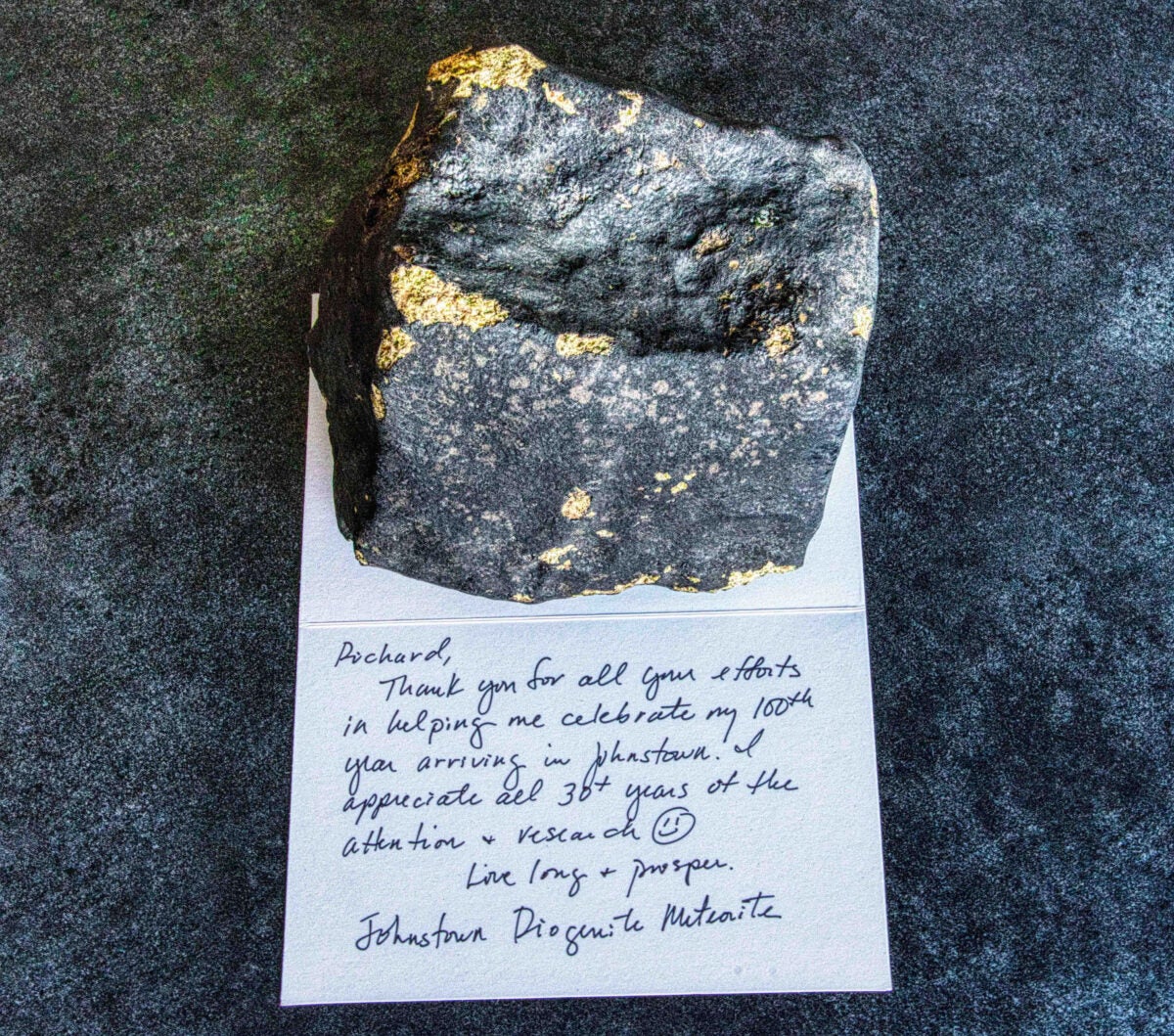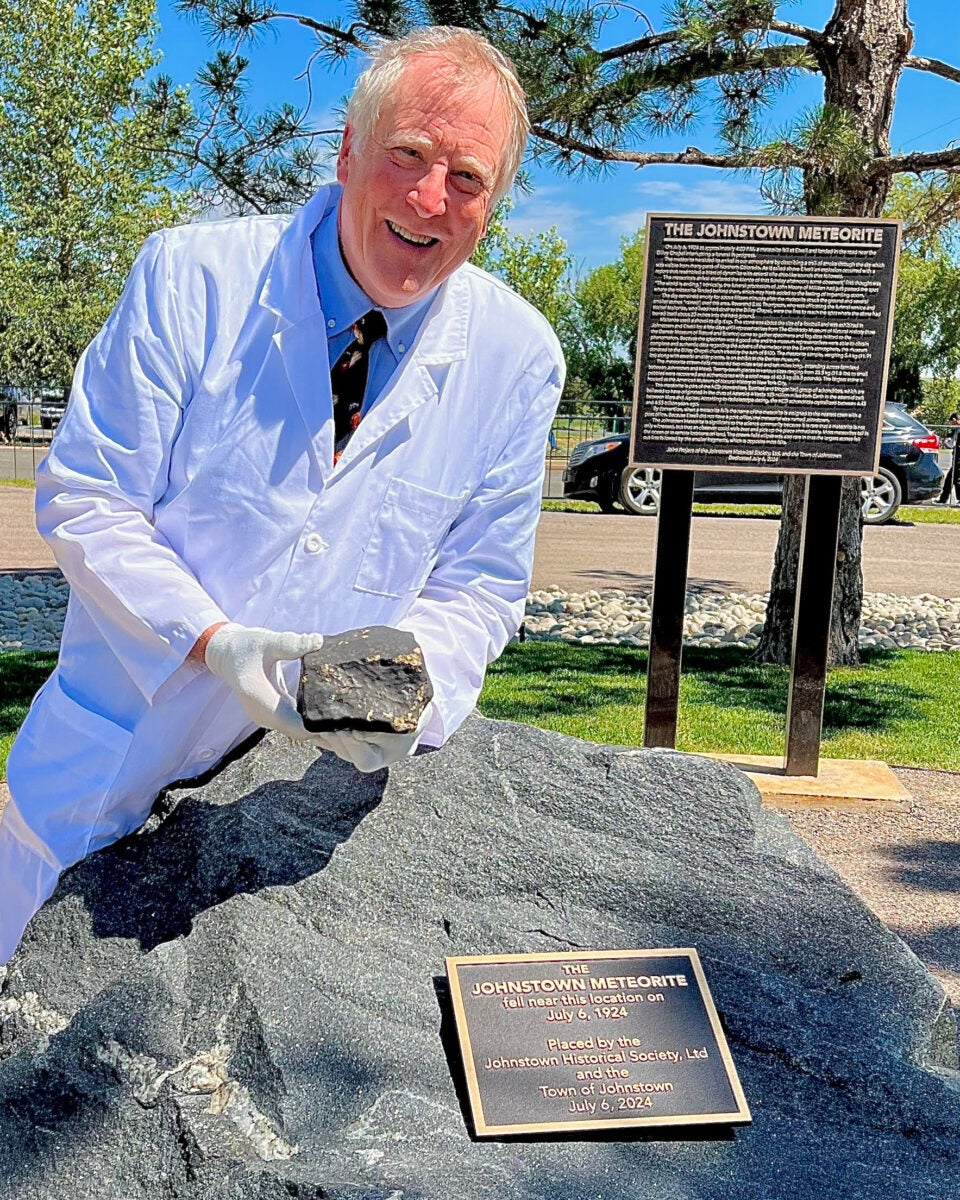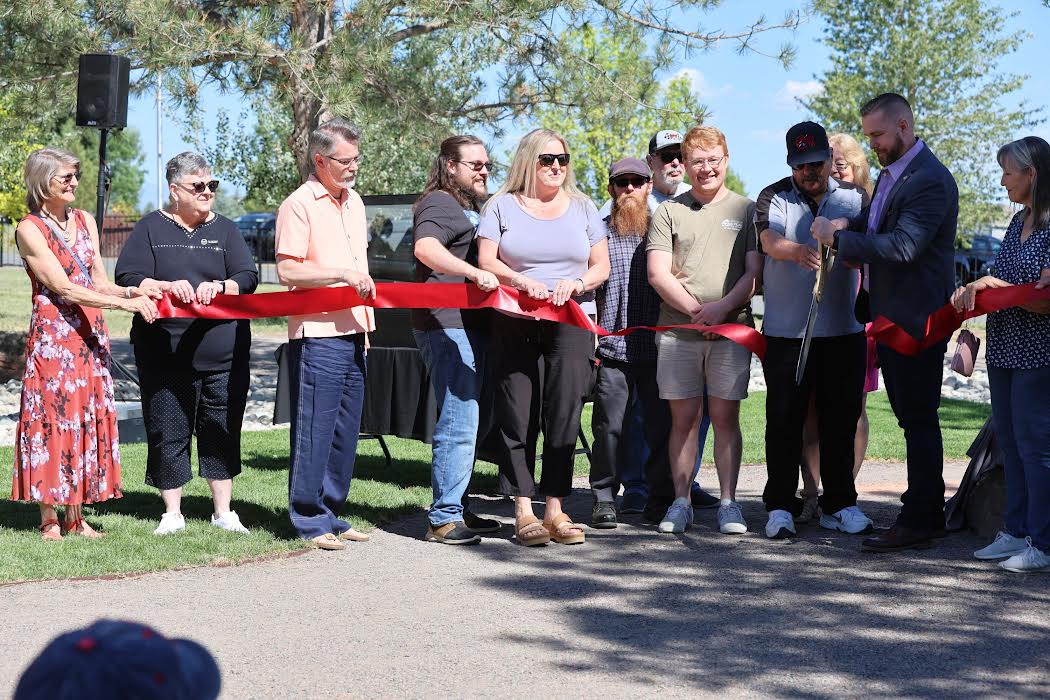
The Johnstown meteorite, on loan from the Denver Museum of Nature and Science for an event commemorating the centennial of its fall. Credit: Richard Binzel
On the evening of July 6, 1924, John Moore's funeral was interrupted. A meteorite, trailing a column of smoke, announced its arrival with a series of thunderous explosions.
As mourners walked toward the crash site, they discovered a meteorite buried four feet (1.2 meters) deep in the ground. “Since this was a burial, they happened to have shovels and immediately dug up the meteorite and put it on display in the city,” says Richard Binzel, an MIT astrophysicist who organized the meteorite’s homecoming for the centennial.
One hundred years later, the Johnstown meteorite returned to its impact site, where citizens commemorated the centennial of its fall to Earth with presentations, a rock and gem show, and a historical marker at the landing site.
You don't see many meteorites crashing into Earth. Most never make it through our planet's atmosphere, while many that do end up in the oceans. The Johnstown meteorite is particularly unique because several people witnessed its fall, and those who did recover fragments.
And decades later, the Johnstown meteorite became a link to the understanding of an entire class of meteorites called diogenites, catapulting the specimen to additional fame in the astronomical community.
A chip off the old block

The rock that destroyed the funeral came from asteroid 4 Vesta, the second most massive body in the main belt between Mars and Jupiter. But it was not until the 1990s that researchers were able to trace the Johnstown meteorite back to its original body. “Meteorites are free samples from space, but they don’t come with a return address label,” Binzel says.
The Johnstown meteorite is classified as a diogenite and contains bright green crystals that reveal how it was formed. These crystals form when magma slowly cools beneath the surface of the parent body. Together with two other types of meteorites, known as howardites and eucrites, diogenites form a larger group of meteorites known as HED meteorites, which researchers assume must all have come from Vesta.
“These fragments that we thought came from Vesta must have been excavated from deep underground,” Binzel said. Astronomers believed that these fragments were thrown out of Vesta after an impact.
But how did a piece of Vesta, which is located in the main belt, end up on Earth?
A path to Earth
With the advent of CCDs, astronomers discovered that Vesta does not orbit alone. Deep images showed many smaller asteroids orbiting parallel to Vesta. The orbits of these bodies fall into unstable regions caused by Jupiter's gravity, which can push one of these fragments onto a trajectory toward Earth's orbit. Binzel explains that these areas are like escape hatches or drop-off zones where fragments escape from the main belt into Earth's orbit.
“The key was that we were finding these little fragments of Vesta, like Hansel and Gretel breadcrumbs going from Vesta to these escape hatches, and we discovered a pathway to deliver meteorite samples from Earth,” Binzel says.
In 1996, Binzel and his team imaged Vesta with the Hubble Space Telescope and discovered a 460-kilometer-wide and 13-kilometer-deep impact basin on Vesta.
“The smoking gun for such an impact basin was the opportunity to observe Vesta in depth,” Binzel said. His team estimated that about 1 percent of Vesta had been torn off by the impact that created it, “a volume sufficient to account for the family of small Vesta-like asteroids that extends into regions of dynamic meteorite origin,” they wrote in the paper. Scientific article detailing the discovery.
With this discovery, researchers were certain that the Johnstown meteorite and others like it came from Vesta. Before confirming this connection, researchers had only linked meteorites to the Moon, Earth and Mars.
Binzel describes the Johnstown rock not as the meteorite that launched a thousand ships, but as the one that launched a major mission to the asteroid belt. In July 2011, NASA's Dawn spacecraft reached Vesta and entered orbit around it.
Homecoming for the Johnstown meteorite

The residents of Johnstown were not the only ones to witness a chunk of space fall to Earth that day in 1924. At least four of the meteorite pieces were seen falling, landing in an area about 10 miles by 2 miles (16 kilometers by 3 kilometers).
The 12-pound (5.4-kilogram) Johnstown meteorite was acquired by the Denver Museum of Nature and Science (then the Denver Museum of Natural History) from the cemetery's chapel for $100 and has remained at the museum ever since. About a week after the meteorite struck Earth, an even larger piece, weighing 52 pounds (23.5 kilograms), was found near the Big Thompson River; this piece is now at the American Museum of Natural History in New York. The other pieces are on display in Arizona and Illinois.
On its 100th anniversary, the Johnstown meteorite was awarded a plaque to commemorate its fall and subsequent contributions to science. Attendees at the ceremony sang “Happy Birthday” to the special space rock.
“For me (as a scientist), it’s the scientific link that makes it so incredibly special,” says Binzel. “And then the fascinating story of the fall is the icing on the cake.”









Leave feedback about this